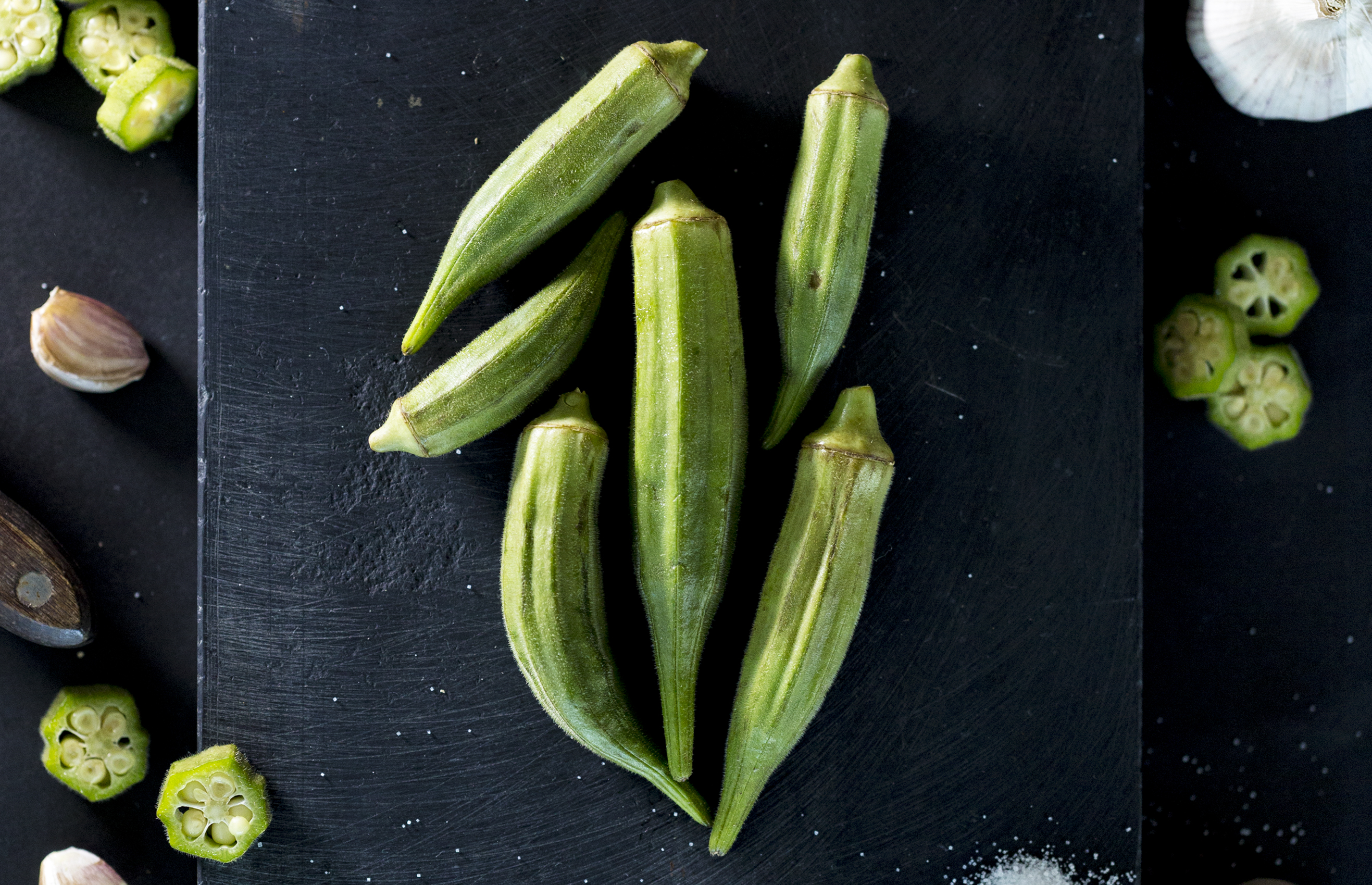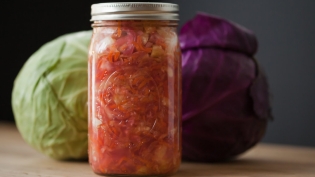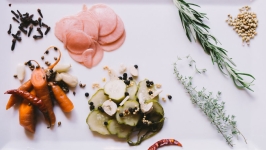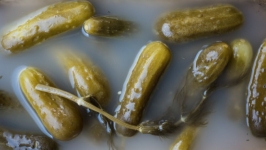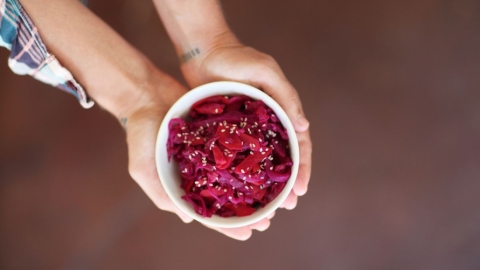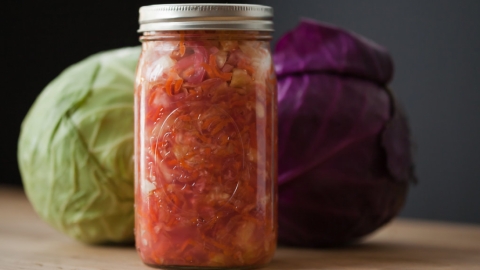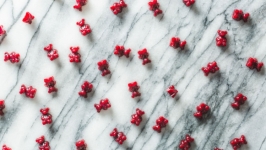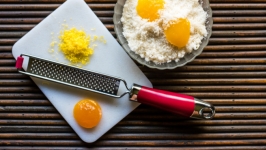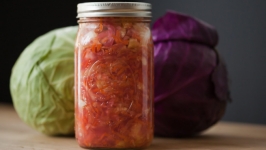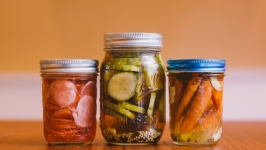Preserve or Perish
There was a time when our food came from our yards, our farms or our neighbors — all food was local food. But it was very hard work, and it came in cycles of boom and bust. One month you were drowning in vegetables, the next you’d kill for something green on your plate. There are good reasons to want to break the grip of seasonality. Eating a diversity of food year-round is healthier and tastier. But many people are trying to eat more local and less commercially processed food. How do we resolve this?
In the 21st century, there are many ways to even out boom and bust. Jet travel and refrigeration, for instance, allow us to share the bounty from the equator and the opposite hemisphere. For example, Mexican blackberries and Chilean peaches give us sweetness in the winter. For those looking to eat more locally though, preservation beats transportation. By preserving local foods, we can move the food from one season to another without a truck.
Preservation allows our food to travel in time (making it last beyond its season) rather than in space (shipping it from wherever it is in-season). Preservation is a way to increase the diversity of foods we eat while preventing it from being wasted or lost. Food, by its nature, begins to spoil the moment it is harvested, so being able to prolong its shelf life has been critical to human survival.
Not only does preservation save perishable food, the methods used also create new foods and different flavors. Communities would dry, ferment and can the ingredients available in their region, thus creating their foodways and their cultures. In fact, the word “culture” itself pertains not only to the customs of a particular nation, people or other social group, but also to fermented foods — foods that have been modified to enhance the nutrient content and extend shelf life.
When saving food, bacteria causing food rot is a concern. There are dozens of ways to control bacteria and preserve food. For instance, change the temperature. Heating foods kills bacteria and coolingfoods slows bacteria’s growth, so both your stove and your refrigerator (and especially your freezer) are tools you already use regularly to preserve food. In the past, people used root cellars and ice boxes to cool food. “Cured” meats like ham, bacon, sausage and jerkies are preserved by smoking, salting, drying or dehydrating to remove water and add chemicals that inhibit bacterial growth.
Some very common foods have their origins as preservation methods. Cheesemaking was used as a way to store milk for months or even years, but we don’t think of it as a way of storing milk, we think of it as its own food group. Pickling uses vinegar to increase acidity. Sugar is a preservative and it is commonly used to make jams, jellies and other fruit preserves. They are great with peanut butter, but well before that, this allowed us to have fruit in the winter.
Excluding air from easily contaminated foods by adding a layer of jelly on the top of a jar can preserve foods for reasonable periods. This method is used in paté, aspic and potted meats. Many cultures preserve meats longer by enclosing in some kind of dough then cooking them. English pasties, Chinese buns, Eastern European pierogis, Jewish kreplach, South American empanadas and Indian samosas are all examples of this method, which also seals out air for awhile. Burying is another way to reduce oxygen and has been used for Asian century eggs, cabbage and kimchi.
Canning, a process using heat sterilization to kill bacteria and sealed containers of either glass or tin (now aluminum) to store them germ-free, began as a military innovation for transporting food to Napoleon’s troops in the first decade of the 19th century. By the beginning of the 20th century, the process made its way into the rural home kitchen. Widespread home canning took off during World War II as a way to reduce the demand for commercial canned goods so more food could be diverted to the military.
Once the war was over, home cooks embraced more modern ways of cooking and sought the convenience of canned and processed foods sold in grocery stores. Companies such as Campbell’s and Kraft offered an alternative to preserving food at home. Over the years, however, serious questions about the nutritional value of processed foods have been raised, given the artificial ingredients used to prolong shelf life. The long list of preservatives includes MSG (monosodium glutamate), artificial sweeteners, partially hydrogenated oils, refined sugar and many, many questionable ingredients. Besides the potential health hazard, are they really necessary?
The increased interest in home canning has demonstrated to many that food can be preserved without all the additives — you can have convenience and also eat healthy, local food! Grocery, hardware and even big box stores regularly carry canning supplies, reflecting the desire to “put up” the bounty of home gardens and farmers’ markets.
My favorite way to capture the local flavor of North Florida is to make jam. I love getting locally grown strawberries or peaches at the farmers’ market when they are cheap and at their most delicious, then inviting my daughter or my friends to help me turn them into preserves. It takes me a couple of hours to make a couple dozen jars, and my friends and I talk and laugh while doing something productive with our hands. It takes only a little know-how to make it safely at home. It is also a way to share some of the unique flavors that grow so well in North Florida — blueberry, blackberry, feijoa (pineapple guava), fig, loquat, persimmon, calamondin and kumquat all make unique flavors of delicious jam.
Pickling is even easier than making jam. Home picklers use vinegar, which is a very fast and safe way to make your own pickles, but Shai Tzabari, owner of the local business Olive My Pickle makes fermented pickles instead, using saltwater brine. These are known as old world, Kosher-style pickles. The process of fermentation leads to naturally occurring live cultures and probiotics. Almost any vegetable can be pickled, allowing fresh, local produce to last for months and to supply variety and new tastes to a family’s out-of-season diet. Even those who don’t like okra may love it tangy and crispy as a pickled vegetable.
Ready to take the plunge into food preservation? One of Jacksonville’s best-kept foodie secrets is the city cannery — a public canning center built in 1978, hidden downtown at Commonwealth and McDuff. Whether you are making jam, tomato sauce or even meat, the canning center stocks everything you need, including industrial gas stoves, giant pots and a machine that uses a conveyor belt system to quickly fill and seal aluminum cans. Master gardeners guide you through the process to make your food tasty and safe. This incredible resource is available for personal or nonprofit use to all Duval County citizens for a nominal fee. Details can be found on their website.
We haven’t even touched on the huge variety of industrial preservation methods like bags of lettuce with less oxygen and more carbon dioxide in them, irradiated meat, food additives, vacuum packing … all of these use one method or another to make the atmosphere in which the food is stored less hospitable to bacterial growth. But myself, I prefer the time-honored methods I can do in my own home with ingredients and processes I understand, like jam, pickles, beer, cheese and dried herbs. My food time-shifts rather than place-shifts, so I can enjoy a great diversity of food all year long and still keep eating locally.


